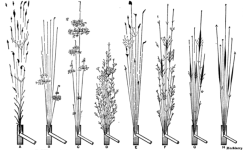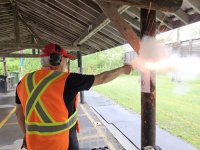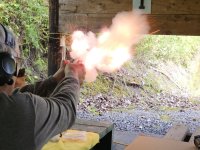I tried drawing the temper with molten lead at about 550 F; puzzling thing is that the portion that was near the surface oxidized to blue while the body of the frizzen face was brown. Either way, the frizzen didn't spark . Since I already had the lead molten, I decided to preload the main spring more (I draw the temper to between 720 and 740 F) It would seem I preloaded too much and I have almost finished its replacement :>( The lock is a cheap one further compounded by having the internals from spare parts of poor design, so I am also in the last stages of making a new tumbler, which I should have done in the beginning. At this point I am holding my breath that the lock will spark.
Worth mentioning that I filed the square section of the tumbler by holding it in a 4 jaw chuck on the lathe and using the jaws to guage when I was filing a square; don't know why I never thought of it long ago.
In reply to sean69, I think a machinist might be able to guess the identity of the steel by the sparks if they worked with only a few grades of steel but doubt the method would work on a piece of scrap ; the sparks would show only that it was high, medium of low carbon.
also relative to Tiriaq and shoeing a frizzen face, garden shovel blades would probably be a good source of material because they seem to be a high carbon steel
Anyway, I will report back in a day or two when hopefully the lock is out of my hair
cheers mooncoon









































































